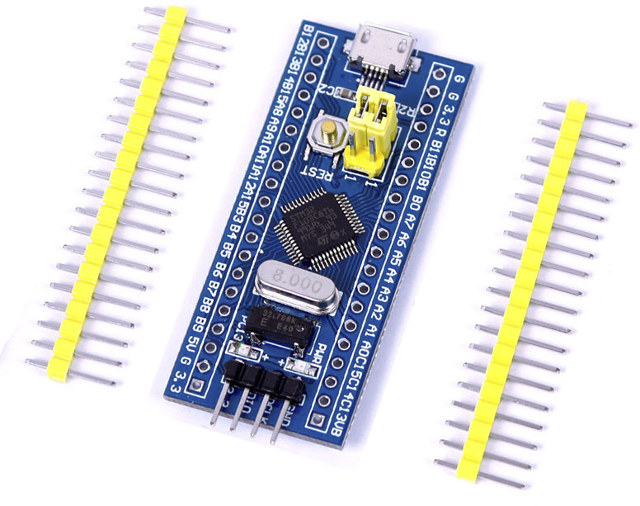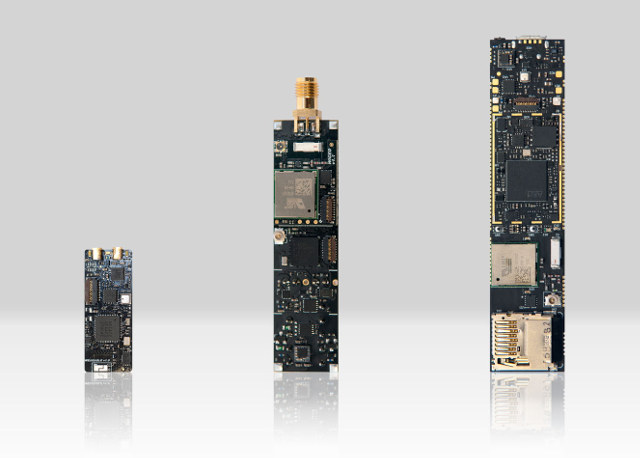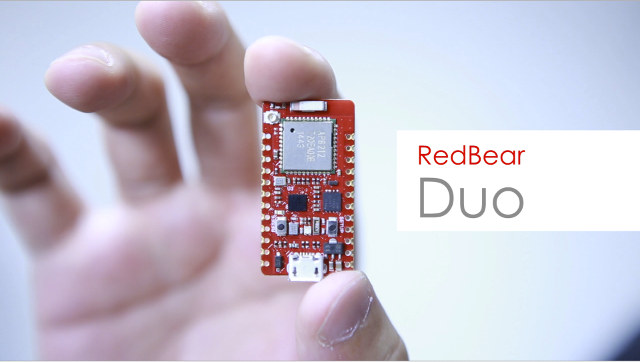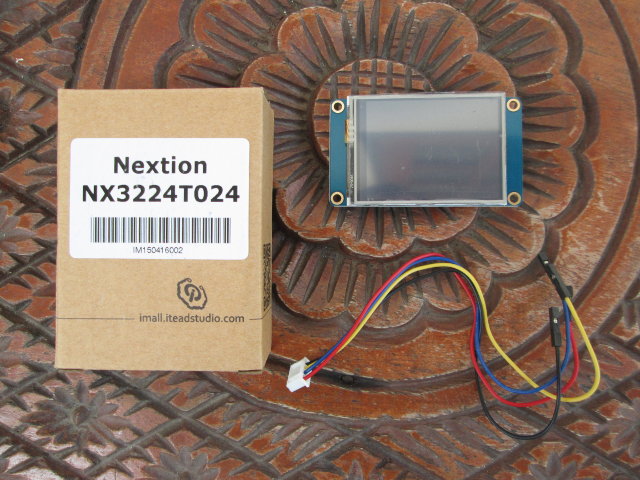I’m amazed that if your budget for a board was just $5 for one MCU board, you now have so many options for your electronics projects: ESP8266 boards, a few STM8 boards, One Dollar Board project, and many more… Other options are “BluePill” or “RedPill” boards based on STM32 or GD32 32-bit ARM Cortex M3 micro-controllers that go for about $2 shipped, and can be programmed with the Arduino IDE thanks to STM32Duino project. BluePill board specifications: MCU – STMicro STM32F103C8T6 ARM Cortex-M3 MCU @ 72 MHz with 64KB flash memory, 20KB SRAM. USB – 1x micro USB port for power and programming Debugging – 4x pin SWD header or micro USB port Expansion – 2x 20-pin with power signals, I2C, SPI, GPIOs, ADC inputs, etc… Misc – Reset button, two jumpers (for boot mode), power and user LEDs. Power – 5V via USB, 2.0-3.6V power via 3.3V pin on […]
Linux 4.6 Release – Main Changes, ARM and MIPS Architectures
Linus Torvalds released Linux Kernel 4.6 earlier today: It’s just as well I didn’t cut the rc cycle short, since the last week ended up getting a few more fixes than expected, but nothing in there feels all that odd or out of line. So 4.6 is out there at the normal schedule, and that obviously also means that I’ll start doing merge window pull requests for 4.7 starting tomorrow. Since rc7, there’s been small noise all over, with driver fixes being the bulk of it, but there is minor noise all over (perf tooling, networking, filesystems, documentation, some small arch fixes..) The appended shortlog will give you a feel for what’s been going on during the last week. The 4.6 kernel on the whole was a fairly big release – more commits than we’ve had in a while. But it all felt fairly calm despite that. Linux 4.5 added […]
LX IoT Cores Are Made for IoT and Wearables with Bluetooth LE, ANT+, 2G/3G, Sigfox, LoRa, and More
LX Group, an Australian company specializing in electronics design and embedded systems, has introduced three wireless modules for IoT and wearables which they call “LX IoT Cores”, and embeds various wireless protocol such as Bluetooth LE/Ant+, 2G/3G connectivity, WiFi, Lora, Sigfox, Taggle, etc… Let’s go though the main technical specs for the three modules, one of which it itself modular (hence the max and min size) depending on your requirements. LX Cellular Core (Right) MCU – STMicro STM32F217IGH6 ARM Cortex-M3 MCU @ 120 MHz with 1MB flash, 128kB RAM Storage – 1x micro SD card reader Communication Interfaces Radios – 2G/3G, WiFi, BLE, ANT+, provision for LoRa, Taggle, SigFox, optional GPS via daughter board Wired – USB, RS485, UART, SPI, I2C, Digital IO, ADC Sensors – Ambient Luminosity, accelerometer, gyroscope, magnetometer, temperature, humidity, air pressure, microphone USB – 1x micro USB port Misc – Reset and 2x user buttons, 2x […]
STMicro Releases Linux based STM32 MCU Development Tools
Until a few years ago, most development tools for micro-controllers were only available for Windows, but as Linux gained popularity among developers and engineers, community of developers designed development tools running in Linux, but only a few companies are providing tools that run on Linux operating systems. The good news is that STMicro has just announced the release of STM32CubeMX configurator and System Workbench for STM32, for both Linux and Windows, with Mac OS supporting coming on Q2 2016. Developped by Ac6 embedded systems company, System Workbench for STM32 relies on Eclipse IDE, supports the ST-LINK/V2 debugging tool under Linux through an adapted version of the OpenOCD project, and can be used with various STMicro STM32 boards including Nucleo boards, Discovery kits, and other Evaluation boards. You can give it a try by visiting OpenSTM32 Community, but for some reasons they ask you to register before accessing the installation instructions. […]
96Boards Mezzanine Add-on Boards with Sensors, Buttons, Relays, etc.. Are Starting to Show Up
Beside excellent software support, and a great community, the two most popular maker boards on the market, namely Arduino and Raspberry Pi, also have many add-on boards, respectively called Shields and Hats, to expand their user and connect sensors, buttons, displays, and so on… Several Linaro’s 96Boards compliant development board launched last year such as LeMaker Hikey and DragonBoard 410c with support for recent versions of Android and Debian, and recently three Mezzanine add-ons boards, as well as somewhat pricey USB to TLL debug board, have started to show up to make it an even more interesting platform. Linker mezzanine card starter kit for 96Boards The first kit is made by LinkSprite and includes Linker Base Mezzanine Card with several sensors and cables. Eight 4-pin connectors with ADC, UART, I2C, and GPIOs allow you connect the eight sensors ad modules provided with the kit:a button module, a red LED module, […]
GigaDevice GD32 is a Faster, Software and Pin-to-pin STM32 Compatible Cortex M3 MCU
Las month, Olimex discovered a Chinese company called GigaDevice has made an STM32 clone called GD32 and compatible with STM32F103, but with higher core frequency (108MHz). Olimex has now posted an update after receiving a letter from GigaDevice, and trying GD32F103RBT6 MCU on their own STM32F103 boards. The company explained that GD32 was their own implementation, and claimed rights on GD32 trademarks, while Olimex discovered than GD32 was working just fine on their board having passed “all functional tests without any modifications”, and with all the same development tools and software code running fine. GD32F103xx datasheet (PDF / English version) can be downloaded to find a few more details: The GD32F103xx device incorporates the ARM Cortex-M3 32-bit processor core operating at 108 MHz frequency with Flash accesses zero wait states to obtain maximum efficiency. It provides up to 3 MB on-chip Flash memory and up to 96 KB SRAM memory. […]
RedBear Duo is a Breadboard-friendly Wi-Fi + BLE IoT Board Based on Ampak AP6212 Module (Crowdfunding)
I’ve taken apart lots of TV boxes and together with Realtek, Ampak are by far the most popular wireless modules to provide WiFi and Bluetooth connectivity in those devices. One startup decided to use Ampak AP6212 module, also found in NanoPi 2 board, to create a breadboard-friendly IoT board with Bluetooth 4.0 and 802.11b/g/n connectivity. Redboard Duo has been designed with the same form factor as many other IoT boards such as NodeMCU or Spark Photon, and features the following: Ampak AP6212 module: STMicroelectronics STM32F205 ARM Cortex-M3 @120MHz, 128 KB SRAM and 1MB Flash Broadcom BCM43438 Wi-Fi 802.11n (2.4GHz only) + Bluetooth 4.1 (Dual Mode) combo chip Storage – On-board 16 Mbit (2 MB) SPI Flash Integrated chip antenna with the option to connect external antenna Expansion – Headers with 18 I/O pins Misc – RGB status LED Dimensions – 20.5mm x 39mm The company also made a small baseboard called RBLink with […]
How to Use Nextion Serial Touchscreen Displays – Part 1: Standalone Mode
Itead Studio launched an Indiegogo campaign earlier this year for their Nextion TFT displays that can be connected to external board such as Arduino or Raspberry Pi via the serial interface, or even a standard computer provided you have a USB to TTL debug board. The campaign was successful with over 1,700 backers, and the company recently sent me two samples for review: a 2.4″ display and a 5″ display. In this post, I’ll look at the boards, and make a small standalone demo with Nextion Editor in Windows. Nextion NX3224T024 2.4″ Display The first item is a 2.4″ TFT display called NX3224T024_011N (non-touch) or NX3224T024_011R (Resistive touch) with 65536 color, 320×240 pixel resolution, LED backlight and up to 200nit brightness. It ships with a cable for the serial connection (5V, Tx, Rx, and GND). The back of the display features the serial connector, a micro SD used to load the […]










